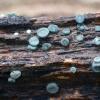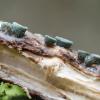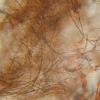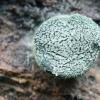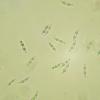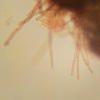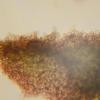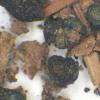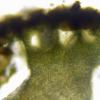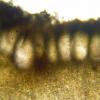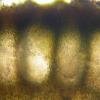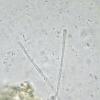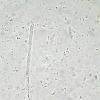
09-01-2026 17:41
Arnold BüschlenHallo, F. dilatata wird von vielen Bryoparasiten

09-01-2026 10:08
 Blasco Rafael
Blasco Rafael
Hola, en el mismo habitat que la anteriorRetamaDia

08-01-2026 21:22
 Blasco Rafael
Blasco Rafael
Hola, He recogido esta muestra de Orbilia sobre Re

07-01-2026 10:24
 Danny Newman
Danny Newman
Pezicula sp. on indet. hardwood Appalachian Highl

07-01-2026 22:22
 Danny Newman
Danny Newman
Tatraea sp. on indet. hardwood The Swag, Great Sm

07-01-2026 17:29
 Marc Detollenaere
Marc Detollenaere
Dear Forum,On a barkless Populus I found some smal

10-11-2021 17:33
 Riet van Oosten
Riet van Oosten
Add-on topic http://www.ascofrance.com/forum/7059

07-01-2026 10:05
 Danny Newman
Danny Newman
cf. Chaetospermum on XylariaCosby Campground, Grea

02-01-2026 17:43
MARICEL PATINOHi there, although I couldn't see the fruitbody, I
I found what I first thought was a Chlorociboria growing on decaying wood, probably Beech,
but on closer inspection it looks to be something else. The size of the cups
were 2mm - 10mm and no stems. The spores were also similar to Chlorociboria but
much bigger 22 x 4.8 micron.
I've including some images from the microscope but really not sure what this may be.
Any help or comments are much appreciated.
Very Best Wishes John Leach

I remember you well from Sheffield. What did you collect here, have you been overseas??
The beforelast photo looks as if you have added KOH? And the third I cannot interpret. What I miss is a photo of the asci and paraphyses. The hymenium looks very scurfy, there must be some origin of that. Are the asci amyloid?
Zotto
They were collected from Whitwell Wood in Derbyshire, England. No KOH just Congo Red in 10% ammonia and yes the hymenium was very scurfy. I've not yet seen any asci or paraphyses so must look harder at the collection. I have quite a few samples so hopefully I should find someting to help further.
I'll update soon :)
Best Wishes - John
I have seen a very similar fungus on frass/soil in the hollow trunk of a large dead oak in Belfast.
I assumed it was the anamorph of Hypocrea rufa i.e. Trichoderma viride, but I have little experience of moulds. Unlike you, I could find no evidence that it was an ascomycete i.e. no ascospores, no asci, no paraphyses.
The context was dark green and very solid, gelatinous when cut with a scalpel. The soil underneath the green cups was full of a fugaceous green mould which I took to be a Trichoderma.
Best wishes
Roy
cheers

Zotto

in the meantime I had also the idea that the spores are not related to the "blue thing"..
In the first overview photo we see on the left side som black beaks that could belong to something Gnomoniaceous. The spores shown are in the range of this group.
Regards
Martin
I'm away on holiday for the next couple of weeks but hopefully I can update before I go.
Very Best Wishes - John

John did send me some material of his collection.
Zotto was right to think it is of the same origin as Bernard's find that turned out to be Sarawakus britannicus: http://www.ascofrance.fr/search_forum/25115
The spores shown by John belong certainly to another fungus, maybe one of those pyrenos present in the material he sent but still not examined by me.
What I found in the material in question were ascomata with distinct loculi but nearly without contents due to an immature state. Nevertheless I found some very hyalinous asci in a premature state.
I tend very much to bring this collection very close to the one of Bernard.
Maybe John will collect some more mature ascomata after his return.
Best regards,
Martin
I will update if they develop more.
Best Wishes - John

